Analyse des concurrents sur Instagram en 5 étapes faciles [+Étude de cas Duolingo]
Table des matières
Vous voulez être un acteur de classe mondiale dans votre niche Instagram ? Je pense que oui ! Pour y parvenir, vous avez besoin de plus qu'un bon contenu - vous avez besoin d'informations intelligentes. Et c'est là que l'analyse des concurrents sur Instagram entre en jeu. Elle vous montre ce que font vos rivaux, ce qui fonctionne et où se trouvent les opportunités inexploitées. C'est parti !
- 5 étapes pour réaliser une analyse efficace des concurrents sur Instagram :
- Spot vos principaux concurrents
- Voir le type de contenu qui les attire le plus
- Comprendre la façon dont vos rivaux parlent et se présentent
- Apprendre à qui (et quand) ils s'adressent
- Comparer leur performance par rapport à la vôtre
Qu'est-ce que l'analyse des concurrents sur Instagram ?
Une analyse des concurrents sur Instagram est le processus de suivi et d'évaluation de ce que les autres marques ou profils de votre niche font sur Instagram. Et dans quelle mesure ils y parviennent.
Il vous aide à comprendre leur stratégie de contenu, l'engagement du public et la performance globale d'Instagram.
L'analyse des concurrents sur Instagram vise à trouver ce qui fonctionne, à repérer les lacunes et les opportunités inexploitées, et à utiliser ces informations pour améliorer votre visibilité et votre impact sur la plateforme.
Faites votre analyse des concurrents sur Instagram dès maintenant !
Pourquoi avez-vous besoin d'une analyse des concurrents sur Instagram ?
Dans le domaine du marketing, il n'y a pas d'art pour l'art, surtout lorsqu'il s'agit d'analyser les choses.
Donc, si vous vous demandez pourquoi vous devez "perdre" votre temps sur effectuer une analyse de la concurrence sur Instagram, voici quelques raisons importantes :
- Identifier le type de contenu qui fonctionne le mieux dans votre niche.
Cela inclut à la fois les formats Instagram (Reels, Stories, carrousels) et les types de contenu (vidéos drôles, tutoriels, storytelling) - Avoir un point de référence.
Comment pouvez-vous juger votre Performances sur Instagram sans la comparer à d'autres ? Comment savez-vous que vous êtes dans la bonne direction (ou pas) ? - Pour mieux comprendre votre public.
En observant qui interagit avec vos concurrents et ce à quoi ils répondent, vous en apprendrez davantage sur les personnes que vous essayez d'atteindre - et sur la manière de les atteindre réellement. - Identifier les lacunes en matière de contenu et les nouvelles opportunités.
L'analyse des concurrents sur Instagram peut fournir des indications sur les sujets ou les formats que vos rivaux négligent, ce qui vous donne de l'espace pour vous démarquer. - Pour gagner du temps et de l'argent.
Les actions fondées sur des données ont toujours plus de chances de fonctionner que les suppositions aléatoires. Ce n'est pas du gaspillage, c'est de l'investissement !
Essayez le meilleur outil d'analyse des concurrents sur Instagram !
Comment analyser vos concurrents sur Instagram ? 5 étapes
Passons maintenant à la pratique.
Je vais vous montrer comment faire l'analyse des concurrents sur Instagram dans ce guide rapide étape par étape.
Étape 1 : Identifier les concurrents sur Instagram
Utiliser la recherche Instagram de manière stratégique
L'époque où la recherche sur les médias sociaux se résumait à la recherche de noms d'utilisateur est révolue.
Aujourd'hui, la barre de recherche d'Instagram est un outil puissant qui vous permet de découvrir des comptes concurrents :
- Par mots-clés.
Tapez les mots qui sont étroitement liés à votre produit, service ou contenu (par exemple, "application d'apprentissage des langues"). Instagram vous suggérera des profils apparentés, des posts de premier plan et des hashtags. - Par hashtags.
Recherchez des hashtags populaires spécifiques au secteur (par exemple, #languagelearningapp). Visitez la section "Tags", cliquez sur le hashtag approprié et explorez les onglets "Comptes" et "Non personnalisé". - Par lieu.
Si vous êtes une marque locale, la recherche par ville ou par région vous aidera à identifier les concurrents proches qui ciblent le même public.
Malheureusement, cette méthode présente deux problèmes majeurs : cela prend du temps et il n'affiche pas toujours les concurrents les plus pertinents.
Au lieu de cela, il donne la priorité aux profils et aux posts qui sont performants aux yeux de l'algorithme, ce qui peut ne pas refléter votre paysage concurrentiel réel.
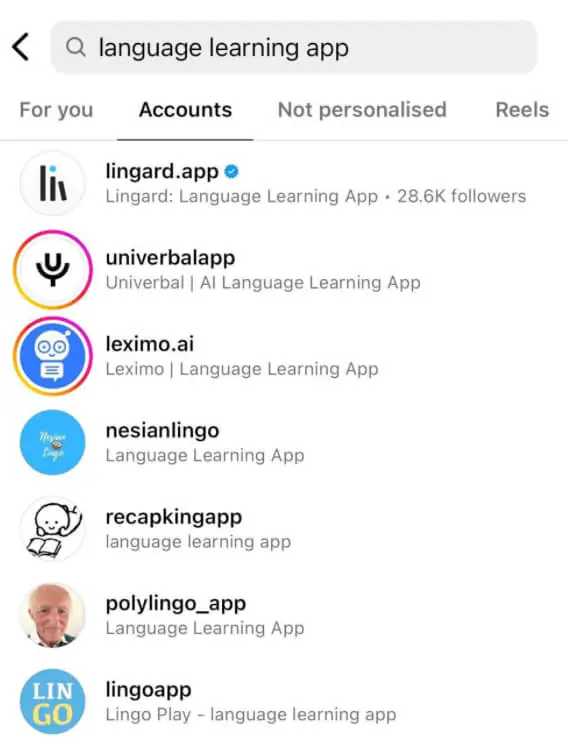
Demander à l'assistant IA
L'utilisation d'un outil d'IA dédié est une technique plus avancée (et plus précise) pour une analyse des concurrents sur Instagram. Et je ne parle pas de ChatGPT, Gemini, ou d'autres outils de ce genre.
Ne vous méprenez pas : ces chatbots d'IA populaires peuvent vous aider à identifier les concurrents d'Instagram, mais leur précision est encore moindre que celle de la recherche Instagram.
Au lieu de cela, je suggère d'utiliser alimenté par l'IA outils d'analyse de la concurrence comme Brand24.
Pourquoi ?
Parce que Brand24 est un écoute sociale outil qui suit et analyse des mention réels.
Il ne s'agit pas d'estimations, ni d'hallucinations, mais de mention réels provenant de multiples sources en ligne, notamment :
- Plateformes de médias sociaux, comme Instagram, Facebook, X (Twitter), TikTok, LinkedIn, Reddit, Bluesky, Telegram ou Twitch.
- Sites d'information, blogs, podcasts, plateformes vidéo et sites web
- Examiner les plates-formes et les bulletins d'information.
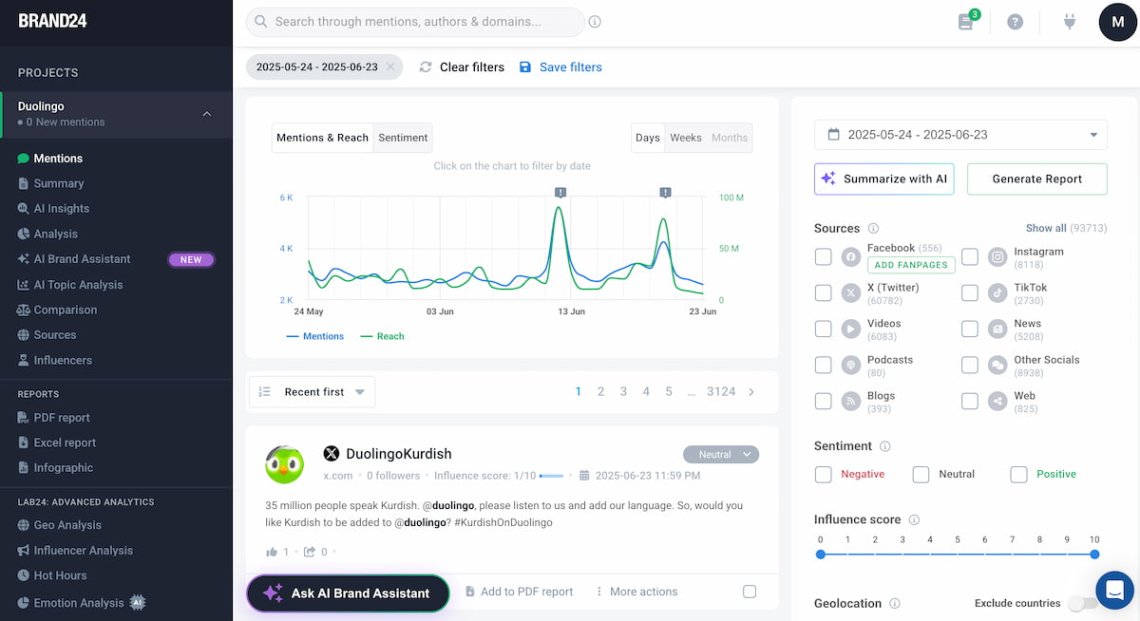
L'assistant de marque AI est l'une des principales caractéristiques du Brand24, renforcé par l'IA.
Il fonctionne comme ChatGPT, mais il est équipé de données internes uniques, ce qui rend les résultats beaucoup plus personnalisés (et donc plus précis).
Trouvez vos meilleurs concurrents sur Instagram grâce à l'assistant de marque AI !
Mieux, je vais vous montrer un exemple.
Supposons que vous cherchiez un concurrent de Duolingo sur Instagram.
J'ai tapé un message très simple : "Identifiez les 5 principaux concurrents de Duolingo sur Instagram".
Après quelques secondes, l'assistant de marque IA a présenté une liste curée (et très précise !) d'applications linguistiques avec de courts résumés et des liens directs vers leurs posts Instagram.
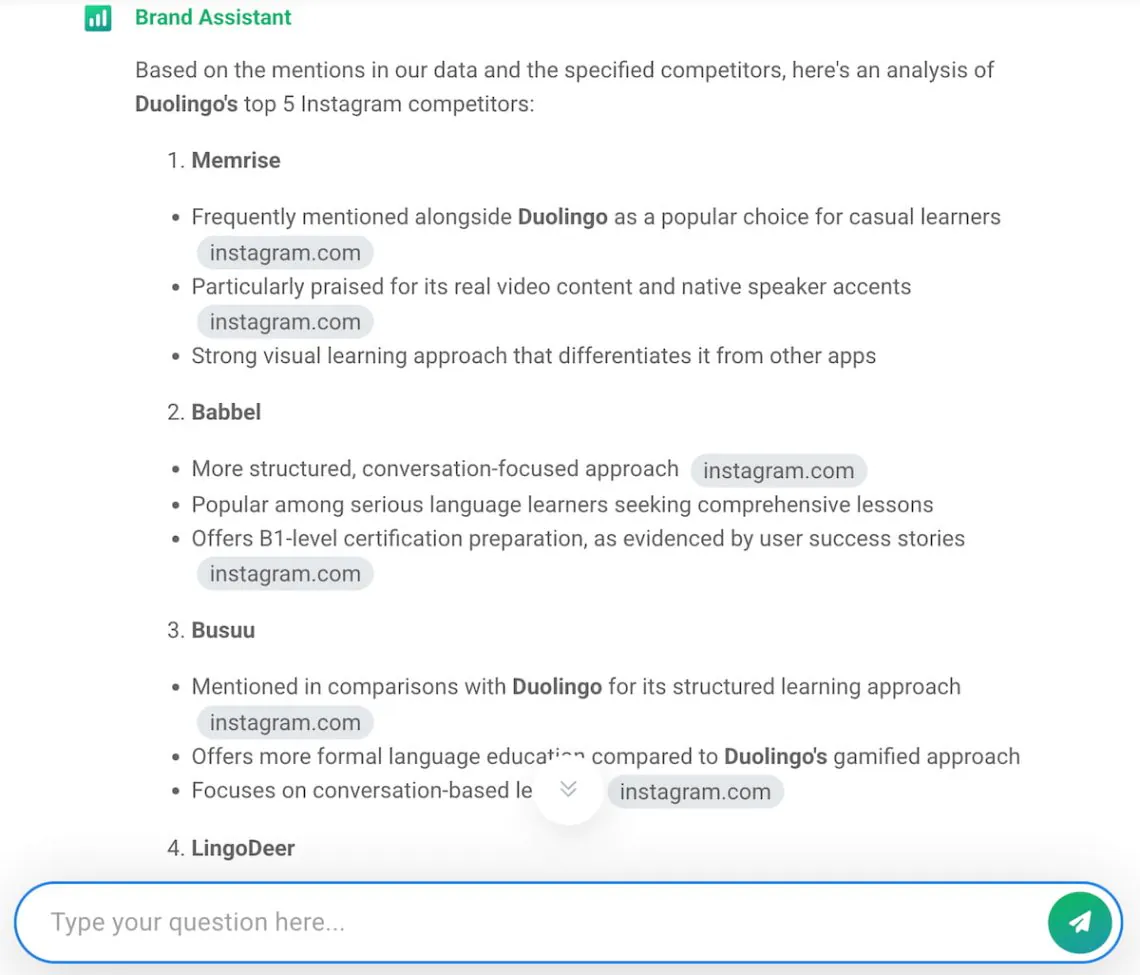
Conclusion rapide : Au lieu de passer des heures à faire défiler manuellement des hashtags ou des résultats de recherche, j'ai obtenu une liste prête à l'emploi de concurrents réels - pertinents, vérifiés et actifs sur Instagram.
C'est la force de l'utilisation d'un outil d'IA conçu spécifiquement pour les surveillance des médias sociaux.
Il ne fait pas de suppositions - il vous montre qui est réellement en concurrence pour attirer l'attention de votre public.
Faites votre analyse des concurrents sur Instagram dès maintenant !
Étape 2 : Examiner la performance de leur contenu
D'accord, vous avez identifié vos concurrents sur Instagram. Maintenant, il est temps d'explorer leur stratégie de contenu.
Peu importe ce que les gens vous disent, le contenu est le roi incontesté d'Instagram.
Il pousse les gens à suivre et à s'engager avec certains profils Instagram tout en ignorant les autres. C'est le média qui diffuse les messages de la marque, qui pousse à l'engagement et à l'engagement. notoriété de la marque et la fidélisation, et stimule les ventes.
Pour faciliter cette étape, je vous propose de la réaliser sous la forme d'un schéma questions-réponses.
Voici les questions que vous devriez poser lors d'une analyse concurrentielle sur Instagram :
- Quel est le type de contenu qu'ils publient le plus souvent ?
- Quels sont les messages qui suscitent le plus d'intérêt ?
- Quels sont les thèmes ou sujets de contenu qui stimulent leur présence sur Instagram ?
- Quel est le ton de la voix qu'ils utilisent ?
- Travaillent-ils avec des influenceurs ?
- Y a-t-il des pics d'engagement ou des messages viraux ?
- Leurs stratégies de marketing Instagram incluent-elles du contenu généré par les utilisateurs ?
- Comment différencient-ils visuellement leur marque ?
Une fois que vous aurez répondu à ces questions pour 2 à 5 concurrents, vous commencerez à remarquer des tendances dans les performances de vos concurrents.
Et, plus important encore, des lacunes que vous pouvez combler avec votre propre contenu.
Faisons une rapide étude de cas et répondre à deux des questions ci-dessus. Notre échantillon de marque sera à nouveau Duolingo.
Essayez le meilleur outil d'analyse des concurrents Instagram de l'univers !
Quels sont les messages qui suscitent le plus d'intérêt ?
Le moyen le plus rapide de découvrir quels posts génèrent le plus de buzz est d'utiliser un outil d'analyse tel que Brand24.
Après avoir configuré le projet pour la marque de votre concurrent, vous devez appliquer trois filtres simples :
- Date d'entrée en vigueur : à vous de choisir ! Pour notre étude de cas, j'ai choisi la période du 23 mai au 22 juin 2025.
- Source : Instagram uniquement
- Auteur : Duolingo (pour ne voir que les posts publiés par son profil Instagram officiel).
- Trier par : Populaire d'abord (pour lister les messages par taux d'engagement)
Les résultats montrent que les cinq meilleurs posts de Duolingo ont été réalisés en collaboration avec Stray Kids, l'un des groupes de K-pop les plus célèbres au monde.
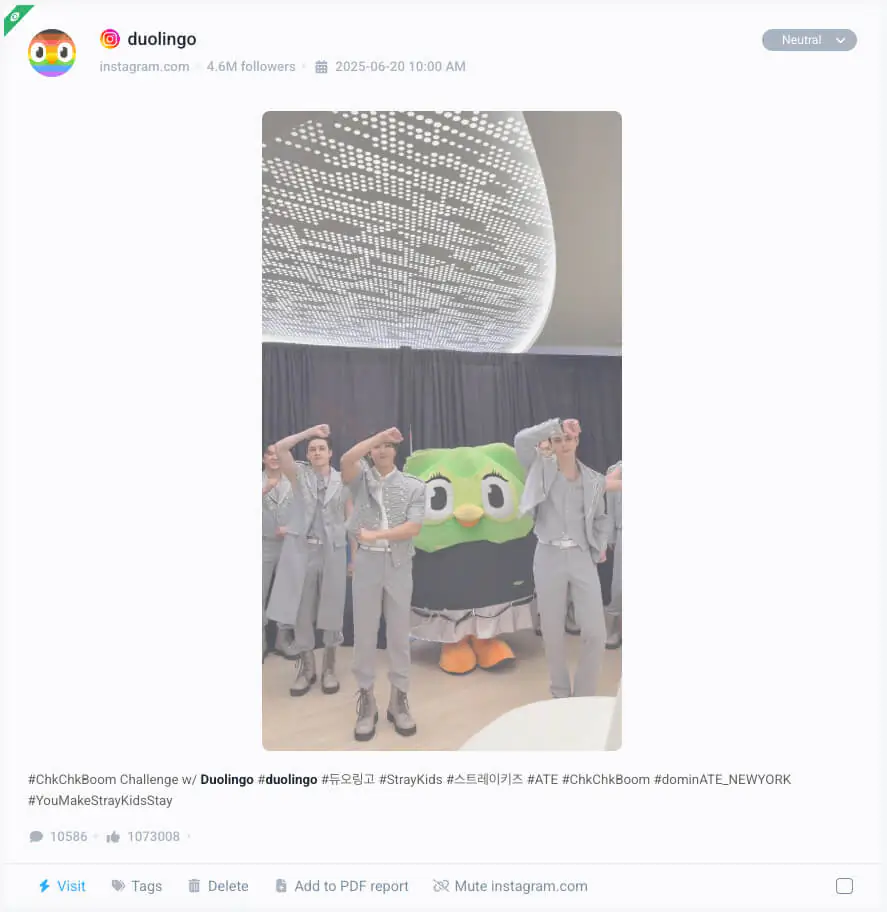
J'ai rapidement basculé sur l'onglet Analyse.
Il s'avère que ces cinq posts ont atteint environ 64 millions ( !) d'utilisateurs d'Instagram, généré 1,3 million de likes et 13 000 commentaires.
Ce sont des chiffres énormes en ce qui concerne les Visibilité sur Instagram!
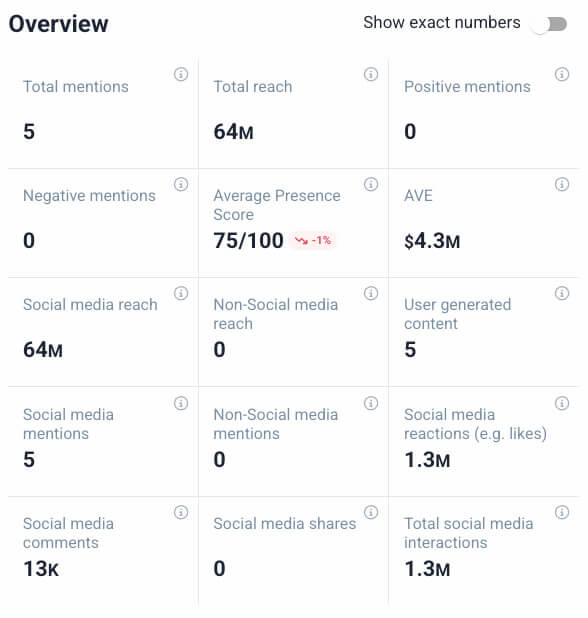
Conclusion rapide : Duolingo collabore avec des influenceurs de premier plan pour renforcer sa notoriété visibilité de la marque. En outre, elle renforce l'image de Duolingo en tant que marque amusante, à l'écoute des tendances et culturellement pertinente.
Lire la suite : Stratégie de Duolingo en matière de médias sociaux : Quelle est son efficacité ?
Quels sont les thèmes ou sujets de contenu qui stimulent leur présence sur Instagram ?
Voyons maintenant quels sont les sujets qui contribuent le plus aux discussions autour de Duolingo.
Cette fois-ci, nous n'utiliserons pas le filtre Auteur (nous laisserons donc Brand24 analyser toutes les conversations sur Duolingo qui ont lieu sur Instagram).
Le Analyse des thèmes de l'IA - une fonction qui regroupe les discussions - montre que les trois contextes les plus fréquents dans lesquels les gens discutent de la marque Duolingo sont les suivants :
- Ressources d'apprentissage de l'anglais - pas du tout surprenant
- Mèmes et humour - C'est intéressant ! Cela prouve l'efficacité du ton de voix de Duolingo.
- Engagement des utilisateurs - La bonne réception des défis et des stries est une information précieuse pour le développement des produits.

Conclusion rapide : L'Instagram de Duolingo est entièrement consacré à l'apprentissage, aux plaisanteries et aux séries. C'est ce qui incite les gens à parler et à partager.
Découvrez pourquoi les gens parlent de vos concurrents sur Instagram !
Étape 3 : Vérifier le positionnement et le message de la marque
Chaque marque veut être quelque chose dans votre esprit : un expert de confiance, un ami sympathique ou un hibou au langage chaotique avec une obsession pour les stries. C'est un élément de la stratégie des médias sociaux appelé le positionnement de la marque.
Et c'est sur Instagram qu'il prend vie.
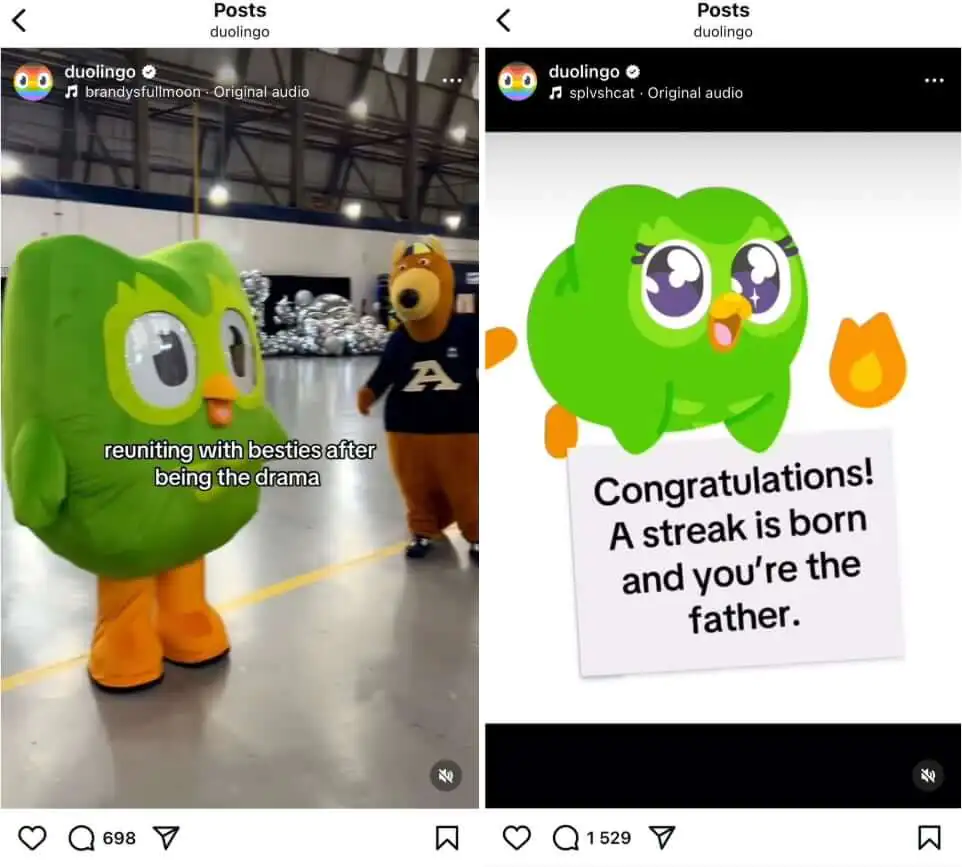
Vérifiez comment vos concurrents se décrivent dans leur biographie. Quels mots utilisent-ils ? Quel est leur ton - amical, enjoué, formel, inspirant ?
Parcourez ensuite leur contenu. Se concentrent-ils sur l'éducation ? Le divertissement ? La motivation ? La vente ? Leur message est-il cohérent ?
Vous pouvez également ignorer le travail manuel et demander à la Assistant de marque AI.
Par exemple, j'ai demandé : "Quel est le positionnement de la marque Duolingo et le style de messagerie sur Instagram ?".
J'ai reçu beaucoup d'informations détailléesLe site Web de Duolingo contient des informations sur la marque, notamment une description du ton de Duolingo, des données sur les indicateurs d'engagement et un résumé des sujets couverts par la marque.

Après cette analyse, posez-vous la question suivante : quelle est votre image ? Et comment pouvez-vous dire quelque chose d'un peu différent, d'un peu plus net, d'un peu plus "vous" ?
Enfin, n'oubliez pas de ne pas faire de copier-coller ! Les gens détestent les imitateurs.
Trouvez votre propre style !
Faites votre analyse des concurrents sur Instagram dès maintenant !
Étape 4 : Connaître son public
Concentrons-nous à présent sur le public cible.
Savoir qui interagit avec vos concurrents peut vous aider à adapter votre contenu à des groupes similaires ou découvrir des segments inexploités qui méritent d'être ciblés.
Il peut également révéler quand poster.
Cette fois-ci, je vous montrerai comment obtenir des informations précieuses sur le public cible de votre concurrent sur le site Web de la exemple de Babbel - une autre application d'apprentissage des langues et le concurrent direct de Duolingo.
Temps d'activité supérieur
Commençons par analyser l'audience du concurrent en vérifiant à quel moment il est le plus actif sur Instagram.
En utilisant la fonction "Hot Hours" de Brand24, j'ai sélectionné Instagram comme source et filtré les mention liées à Babbel.
À partir des trois matrices disponibles (mentions, reach et interactions), j'ai décidé de vérifier interactions, car ils reflètent le mieux l'engagement réel du public.

Les résultats montrent que le public de Babbel est le plus actif le jeudi de 14h à 15h et Le mardi de 17h à 19h (CET).
Lire la suite : Quel est le meilleur moment pour publier sur Instagram ?
Conclusion rapide : Ce sont les créneaux horaires idéaux pour publier du contenu si vous voulez suivre le comportement de leur public - ou les devancer.
Découvrez vos heures de gloire sur Instagram et celles de vos concurrents !
Émotions
La deuxième étape consiste à analyser les émotions qui sous-tendent les interactions.
Comprendre ce que les gens ressentent lorsqu'ils mention votre concurrent vous aide à créer du contenu qui résonne avec vous ou vous inspire par les performances de vos concurrents.
Utilisation de Brand24 alimenté par l'IA analyse des sentimentsJ'ai filtré Instagram mentions de Babbel par tonalité émotionnelle.
Les résultats ont révélé que la plupart des interactions étaient neutre ou positiveLa plupart du temps, il s'agit de mises à jour sur les progrès accomplis, de bilans de cours et de réalisations de l'utilisateur.
Mais une chose a retenu mon attention : pouvez-vous voir le pic de Babel positif ? Instagram mentions le 19 juin ?

Après une vérification rapide, j'ai découvert qu'elle était due à un post Instagram assez populaire affirmant que Babbel fait mieux que Duolingo en ce qui concerne l'apprentissage axé sur la conversation.
Lire la suite : Comment faire de l'analyse de sentiments sur Instagram ?
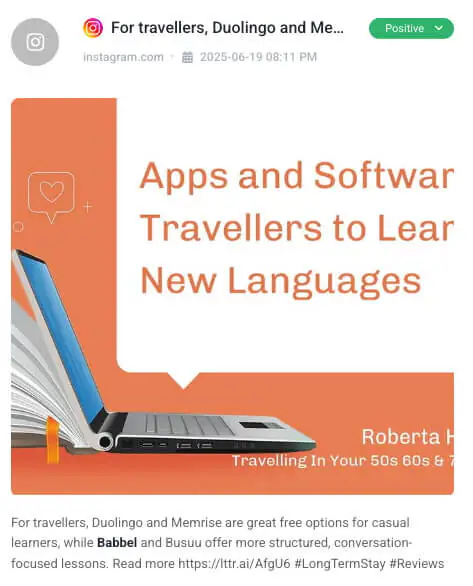
Conclusion rapide : si j'étais le responsable des médias sociaux de Duolingo, je contacterais l'auteur de ce billet et j'essaierais de la convaincre de publier un suivi montrant où Duolingo surpasse Babbel.
Comment les gens perçoivent-ils vos concurrents sur Instagram ? Cliquez et vérifiez !
Analyse géographique
Comme il n'existe aucun moyen d'accéder directement aux données démographiques de l'audience de vos concurrents, une bonne idée est d'identifier d'où proviennent leurs mention.
Utilisation de Brand24 fonction de géolocalisationJ'ai filtré Instagram mentions de Babbel pour voir quels sont les pays et les villes les plus actifs.
Les premiers résultats ?
Les États-Unis, le Sénégal et l'Allemagne sont les principaux pays où Babbel jouit d'une forte notoriété et d'un engagement important de la part des utilisateurs.
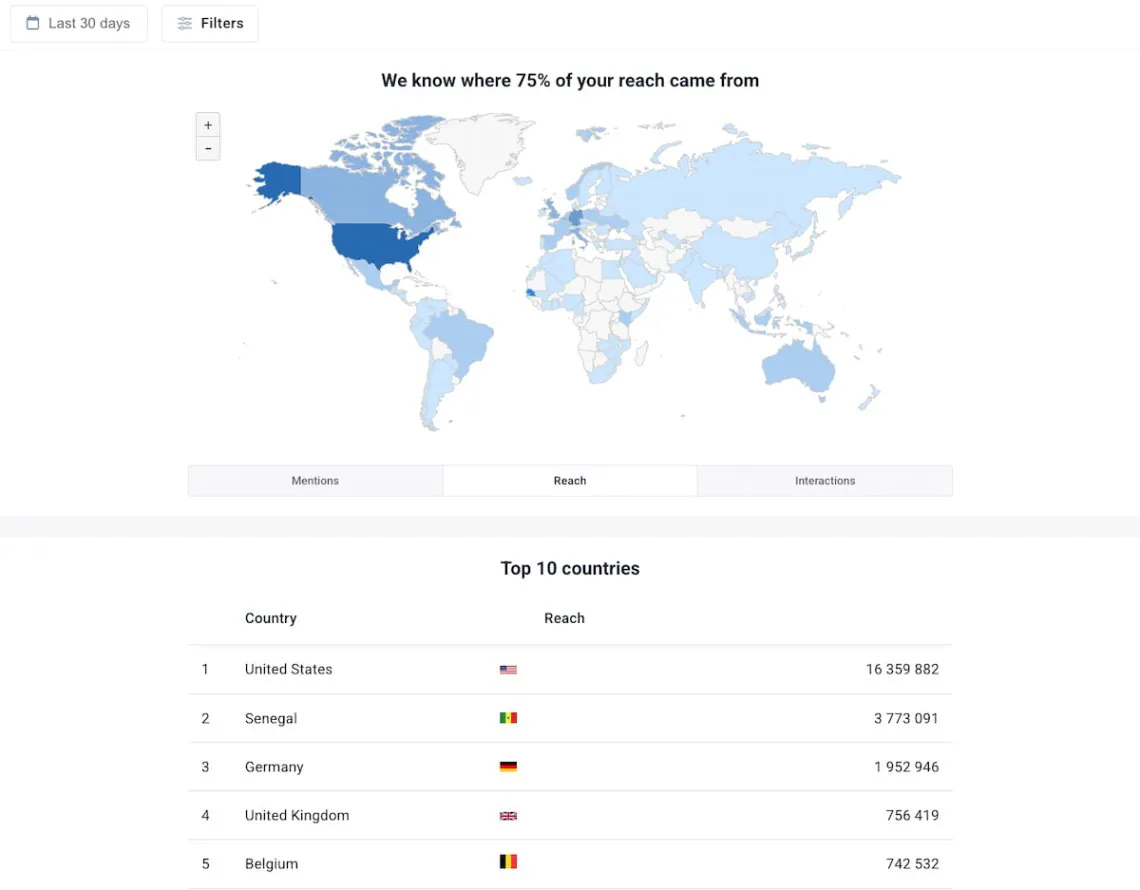
Conclusion rapide : si vous visez des marchés similaires, envisagez de localiser votre contenu, de vous associer à des influenceurs locaux ou d'adapter vos campagnes aux tendances régionales.
Essayez le meilleur outil d'analyse des concurrents sur Instagram !
Étape 5 : Analyse comparative avec les concurrents
Enfin, vous devriez comparer directement les performances Instagram de vos concurrents.
Cette méthode vous donne une image claire de ce qui fonctionne pour eux, de ce qui fonctionne pour vous et de ce que vous pouvez améliorer.
En d'autres termes, il vous aide à prendre des décisions plus intelligentes en matière de contenu, sur la base d'informations réelles et non de suppositions.
Pour les besoins de basevous pouvez simplement visiter le compte Instagram de votre rival et effectuer une comparaison manuelle.
Par exemple, vous pouvez voir le nombre de followers, analyser la bio, faire défiler le profil et vérifier les formats de contenu utilisés, la conception graphique, etc.
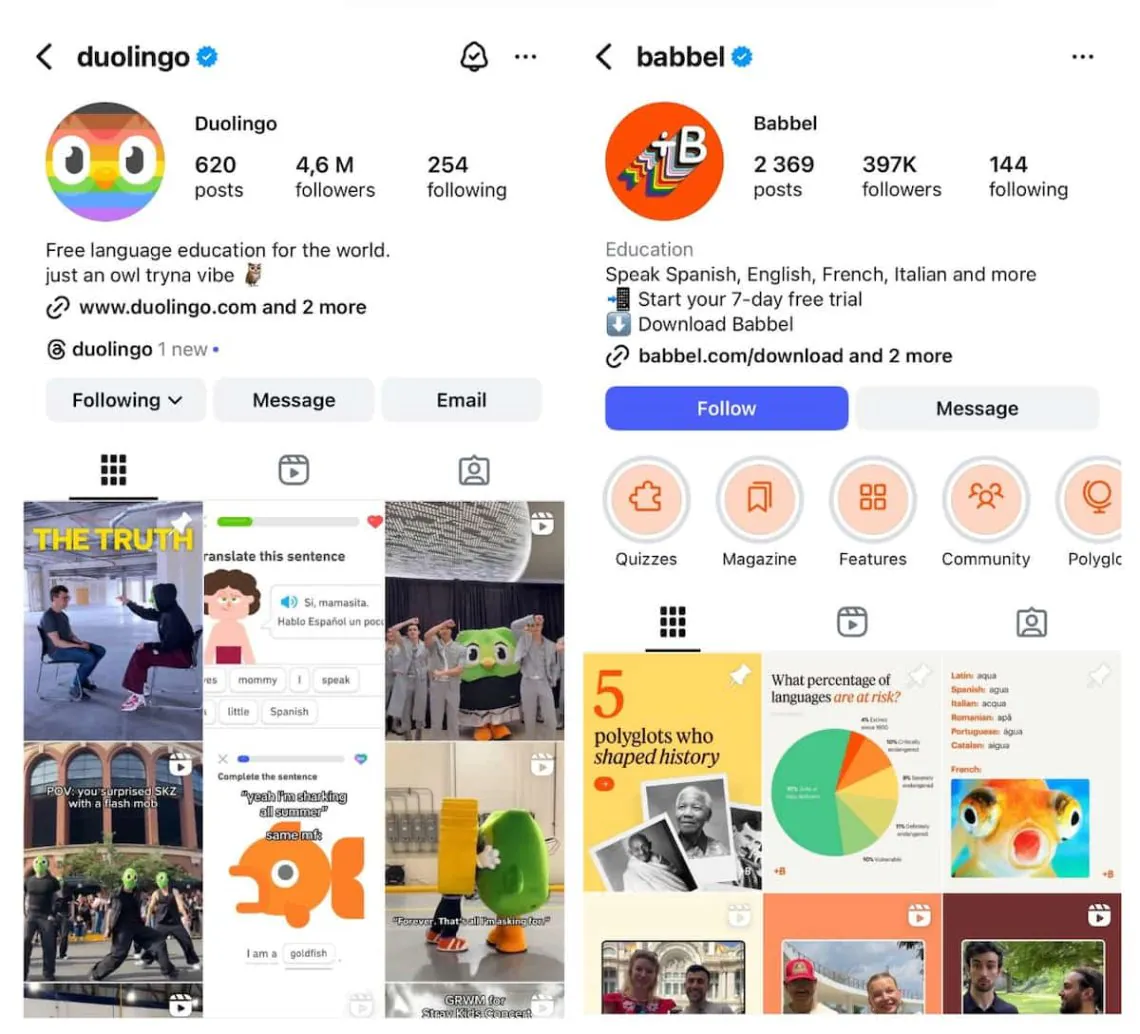
Pour une analyse plus avancée des concurrents sur InstagramJe recommande d'utiliser la fonction de comparaison de projets de Brand24.
Il s'agit d'un simple tableau présentant vos performances en matière de médias sociaux et celles de vos concurrents.
Ci-dessous, vous pouvez voir la comparaison entre Duolingo et Babbel.
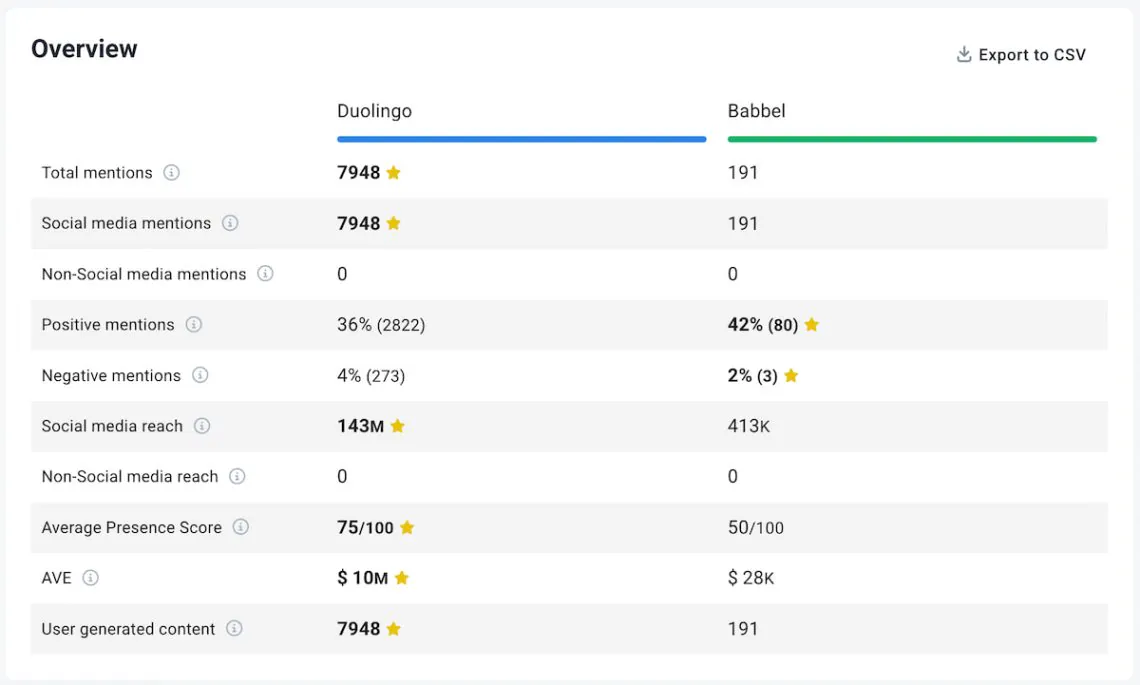
Cette analyse comparative montre L'avantage dévastateur de Duolingosurtout en termes de mentions, de portée, Équivalent de la valeur publicitaire (EVP)et le volume de contenu généré par les utilisateurs.
Cependant, Babbel se débrouille très bien en ce qui concerne le sentiment des mention d'Instagram !
En outre, vous pouvez étendre votre analyse concurrentielle d'Instagram en comparant les taux d'engagement.
Pour ce faire, vous pouvez utiliser un outil gratuit d'analyse des concurrents sur Instagram, tel que Calculateur de taux d'engagement de HypeAuditor.
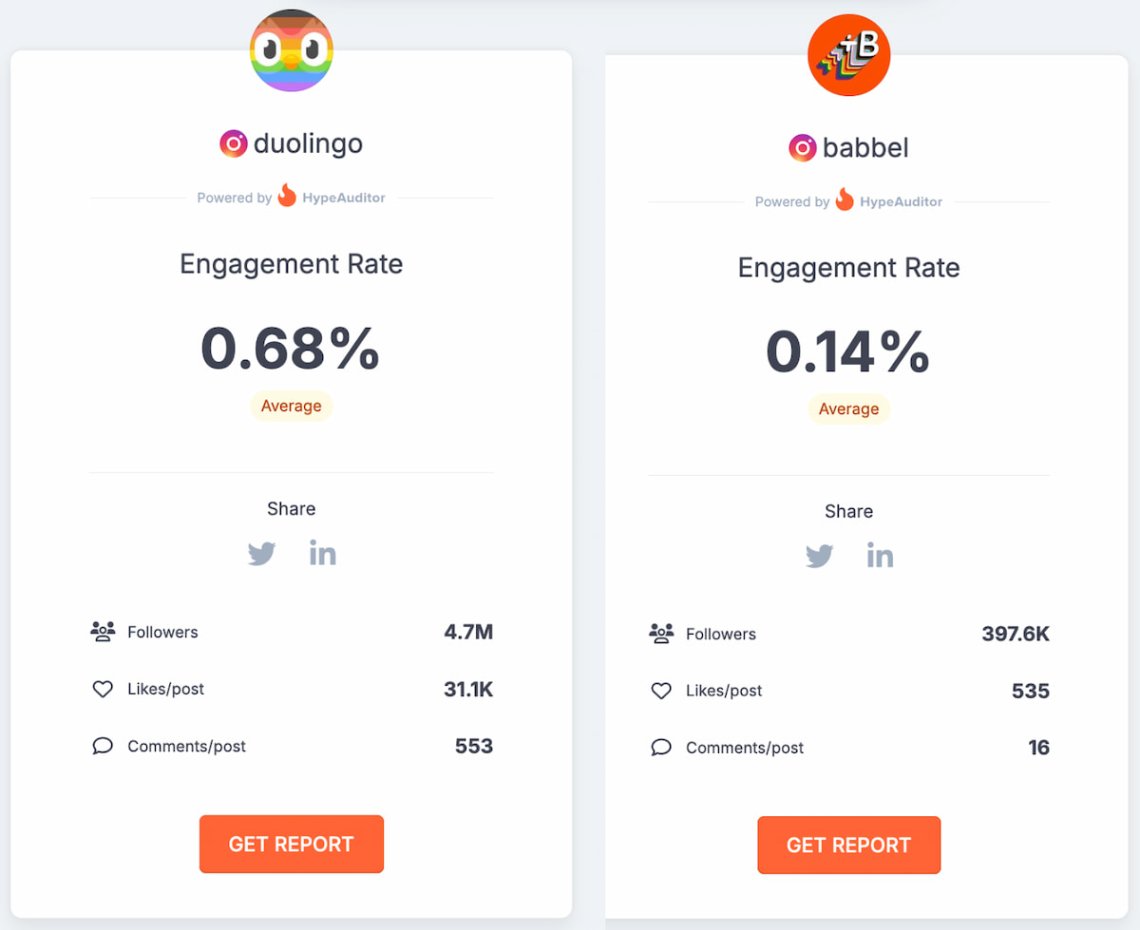
En fin de compte, vous pouvez compiler toutes les données dans un Rapport d'analyse Instagram d'avoir tout en un seul endroit.
Comparez vos performances sur Instagram avec celles de vos concurrents !
Conclusion
La plupart des stratégies Instagram réussies sont fondées sur des connaissances réelles, et non sur des sentiments instinctifs. L'analyse des concurrents vous aide à voir ce que font les autres dans votre niche - et à quel point ils le font bien.
Il vous indique les types de contenu, les formats et les tonalités qui retiennent l'attention. Il vous aide à repérer les préférences du public et les sujets en vogue.
Vous apprenez également quand vos concurrents publient, avec qui ils collaborent et comment ils se positionnent.
Des outils tels que Brand24 accélèrent et améliorent le processus en fournissant des données réelles, étayées par l'IA, et non de simples suppositions. Avec la bonne approche, l'analyse des concurrents devient un raccourci puissant vers de meilleures décisions.
N'oubliez pas que votre objectif n'est pas de copier les autres, mais de Apprenez d'eux, inspirez-vous et faites mieux !
Réflexions finales :
- L'analyse concurrentielle d'Instagram établit un point de référence qui vous permet d'évaluer la visibilité et la présence de votre marque sur la plateforme.
- Les chiffres sont importants, mais c'est le contexte qui les rend exploitables.
- La voix de votre marque a d'autant plus d'importance que tout le monde parle de la même façon.
- La compréhension de votre public cible et de celui de vos concurrents vous aide à adapter votre message.
Démarrer un essai gratuit de 14 jours de Brand24 et analysez vos concurrents Instagram comme un pro !
Articles connexes


![8 Easy Steps to Instagram Hashtag Analytics [2025]](https://brand24.com/blog/app/uploads/2019/08/13_1500x600-2-2.png)
![Comment obtenir plus de vues sur Instagram ? 16 astuces [2025]](https://brand24.com/blog/app/uploads/2024/08/How-to-get-more-views-on-Instagram-1-1-600x335.jpg)
![Comment obtenir plus d'engagement sur Instagram en 2025 ? [15 conseils]](https://brand24.com/blog/app/uploads/2025/05/how_to_get_more_engagement_on_instagram_brand_image_blog_cover_615x345-600x335.webp)
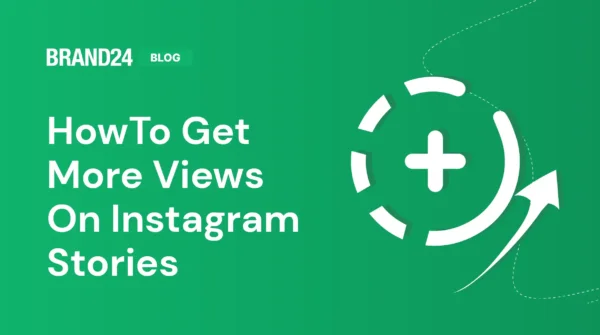


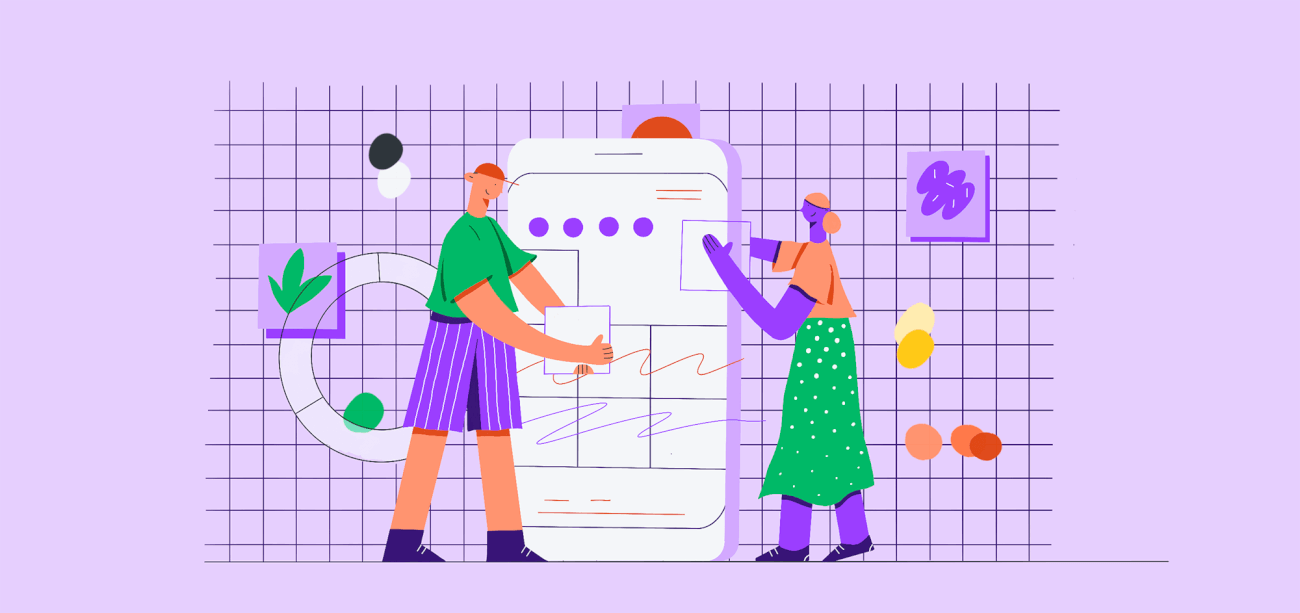
![Comment augmenter sa portée sur Instagram ? 11 conseils puissants [2025]](https://brand24.com/blog/app/uploads/2021/05/How-to-increase-Instagram-reach.png)